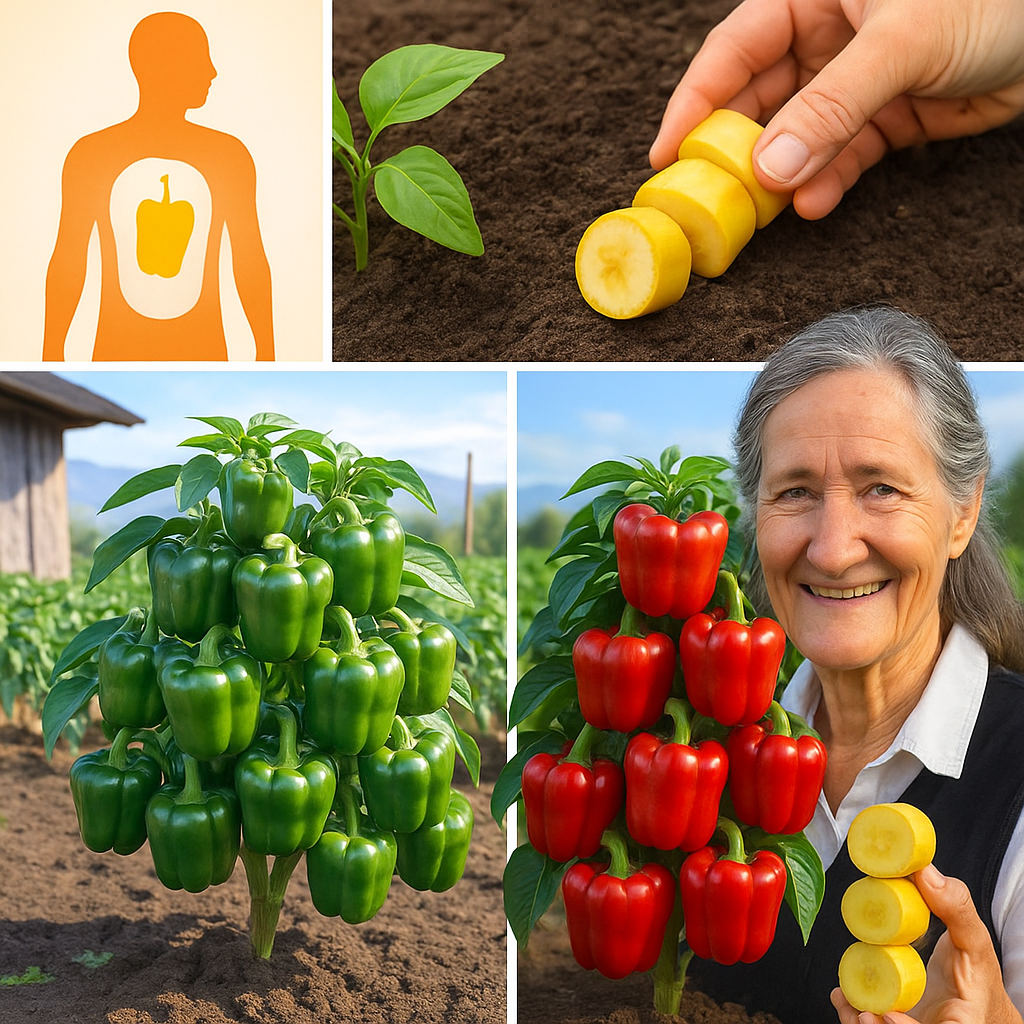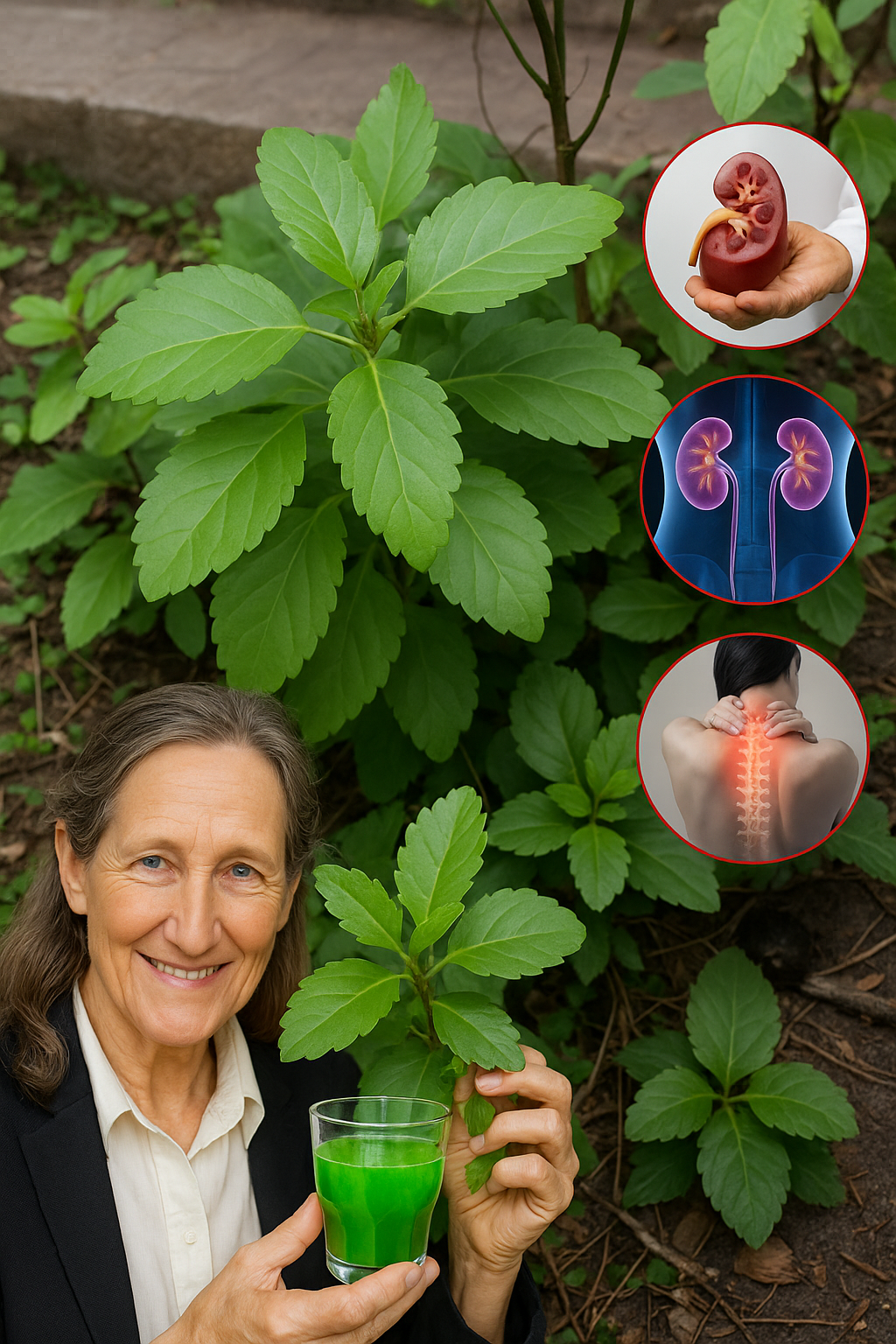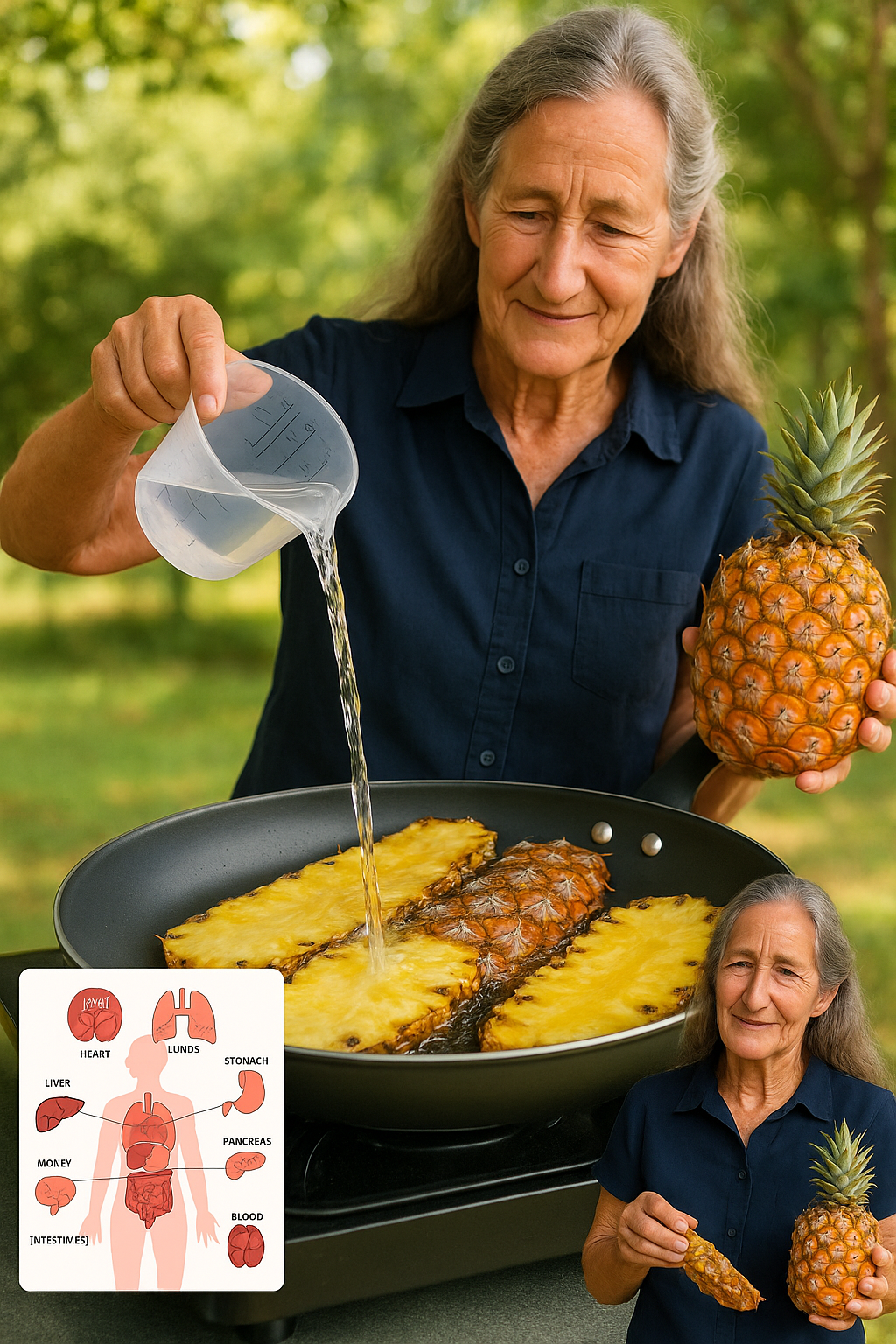Looking for a budget-friendly, eco-conscious way to boost your pepper harvest? You might be surprised to learn that one of the most powerful tools in your gardening arsenal is likely sitting on your kitchen counter: a ripe banana. Gardeners across the globe swear by this age-old trick—burying a chopped banana in the soil before planting peppers—to promote vigorous growth and abundant fruiting. And science backs it up.
Here’s why this simple act can lead to stunning results—and how to do it right.

🧪 Why Peppers Love Bananas
Peppers are what gardeners call heavy feeders. They require fertile, nutrient-rich soil to thrive, especially as they produce flowers and fruits. Key nutrients that peppers depend on include:
- Potassium – Essential for flower development and fruiting
- Phosphorus – Supports strong root systems and early plant vigor
- Calcium – Prevents blossom-end rot and strengthens plant structure
- Magnesium – Crucial for lush green foliage and photosynthesis
- Micronutrients – Including manganese, zinc, and copper, for overall plant health
Bananas naturally contain all of these nutrients, making them a perfect slow-release fertilizer when buried under your pepper plants.
🌱 How to Use Bananas When Planting Peppers
This method is as easy as it is effective. Here’s how to do it:
🔪 Step 1: Chop a Ripe Banana
Use a fully ripe or even overripe banana. Cut it (peel and all) into small chunks. The smaller the pieces, the faster it breaks down.
🌿 Step 2: Dig Your Planting Hole
Dig a hole a few inches deeper than your pepper seedling’s root ball.
🍌 Step 3: Bury the Banana
Place the chopped banana pieces into the bottom of the hole. Spread them evenly.
🧱 Step 4: Add a Soil Buffer
Cover the banana with about 2 inches of soil. This creates a buffer to prevent root burn and helps the nutrients reach the roots gradually.
🌶️ Step 5: Plant Your Pepper
Set your pepper seedling on top of the soil layer and fill in around it as usual. Water thoroughly after planting.
✅ What You’ll Notice
Gardeners who use this trick consistently report:
- Faster plant establishment
- Rich, dark green foliage
- More blossoms and larger fruits
- Stronger stems
- Fewer issues with pests and disease
- Improved harvest size and flavor
And it’s all achieved without chemical fertilizers—just food scraps repurposed into natural plant food.

💡 Bonus Tips for Best Results
- Freeze overripe bananas to use later during planting season.
- Add crushed eggshells for a calcium boost (also helps deter slugs).
- Mix in used coffee grounds for added nitrogen and soil structure improvement.
- Works equally well in raised beds, pots, and in-ground gardens.
- Try this trick under tomatoes and cucumbers, too—they love it just as much.
🌍 Why This Natural Trick Works
Burying the banana beneath the root zone puts the nutrients exactly where the plant needs them most. As the banana breaks down, it feeds the plant slowly and consistently throughout the growing season, reducing the risk of nutrient loss from surface watering or rain runoff.
It’s nature’s version of timed-release fertilizer—but without the chemicals, cost, or waste.
⚠️ A Quick Word of Caution
While this method is generally safe and beneficial:
- Always monitor plant health and soil moisture, especially in dense or poorly draining soil.
- If you’re gardening in an area prone to pests like rodents, you may want to bury the banana deeper or use banana peel powder instead.
- This method won’t replace balanced soil health—use it as a supplement, not a substitute for compost or mulch.
🌿 Final Thoughts
In a world where gardening tips often involve expensive products or complicated routines, this simple banana trick is refreshingly straightforward. It’s natural, effective, and nearly free—plus, it helps reduce food waste while giving your peppers exactly what they crave.
Give it a try this season. You might just discover that the secret to your best pepper harvest ever was hiding in your fruit bowl all along. 🍌🌶️💚
Disclaimer: Every garden is unique. While natural methods like this are generally safe, monitor plant performance and adjust as needed for your specific growing conditions.


